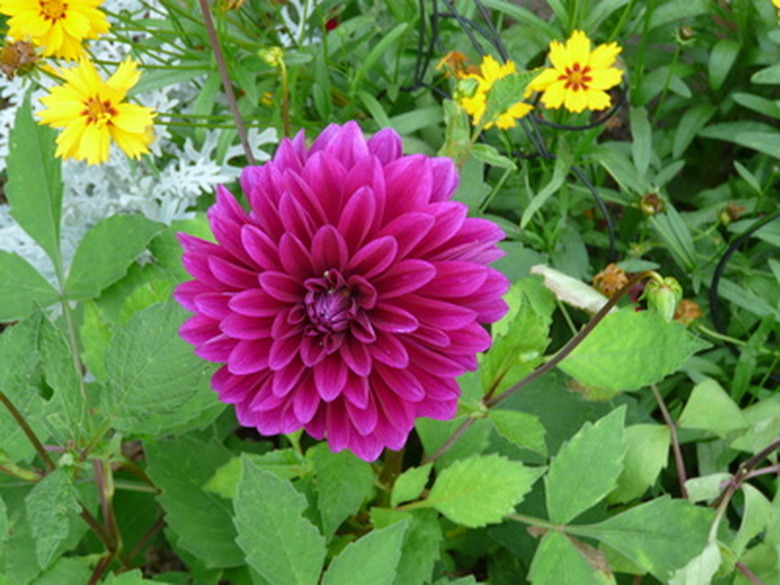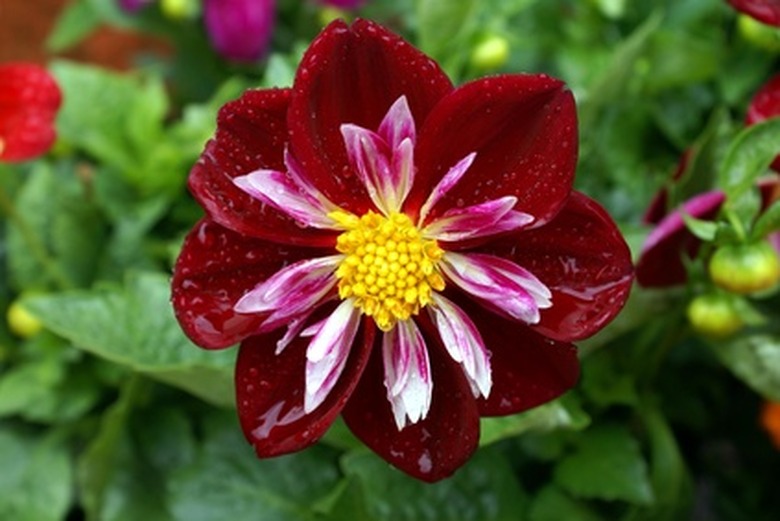Fertilizer For Dahlias
If you can grow tomatoes in the garden, you can grow dahlias, because their culture and care are similar. Dahlias are loved for their great variety of color and their abundant bloom habits. They are a bushy, tuberous, perennial plant that is used for food in traditional cultures and as a decorative flower plant in modern gardens. Dahlias are native to Mexico, Central America and Colombia and there are over 36 known species.
Description
Dahlia flowers range in size from 1 or 2 inches to 12 inches in diameter. They bloom in a wide spectrum of colors from dark red to white and yellow. Species of dahlia grow in height from 12 inches to 8 feet. The root systems are shallow and consist of a clump of tubers connected by fibrous strands. They are propagated by tuber division.
- If you can grow tomatoes in the garden, you can grow dahlias, because their culture and care are similar.
- The root systems are shallow and consist of a clump of tubers connected by fibrous strands.
Cultivation
You should use a high nitrogen fertilizer through the middle of the season but minimize nitrogen at the end of the season, according to the American Dahlia Society. The plants respond well to organic growing methods and the use of compost as a fertilizer. Vermicompost is five times higher in nitrogen than average garden soil and can be a good choice for the first part of the growing season.
Soil Preparation
Matured compost worked into the soil at planting time acts as a soil fertilizer to encourage strong new growth. Dahlias can be planted directly in the ground in the spring when the soil has warmed. Like tomatoes, dahlias thrive when the soil temperature rises above 55 degrees Fahrenheit. The soil should have adequate organic matter and drain easily. Dahlias prefer a sunny garden spot but tolerate partial shade.
- You should use a high nitrogen fertilizer through the middle of the season but minimize nitrogen at the end of the season, according to the American Dahlia Society.
- Vermicompost is five times higher in nitrogen than average garden soil and can be a good choice for the first part of the growing season.
Planting
Dahlias are sold at garden centers and by mail order from specialty nurseries. The tubers are planted in a hole 2 inches deep with the "eye" facing up. The plant's main stem grows out of the eye on the shoulder of the tuber. Groups of tubers planted together need 2 feet between them. Dahlias require staking, and this is most easily done at planting time. Some gardeners use a tomato cage to stake their dahlias.
Ongoing Care
The nitrogen in compost creates vigorous green growth and potassium supports bloom development. Compost releases these nutrients into the soil in response to the plant's needs. Compost fertilizer for dahlias can be added as a side dressing monthly before buds appear and then held back as the flowers develop. The American Dahlia Society recommends using compost tea as a fertilizer to increase the beneficial microorganisms that create nutrients.
- Dahlias are sold at garden centers and by mail order from specialty nurseries.
- The American Dahlia Society recommends using compost tea as a fertilizer to increase the beneficial microorganisms that create nutrients.

